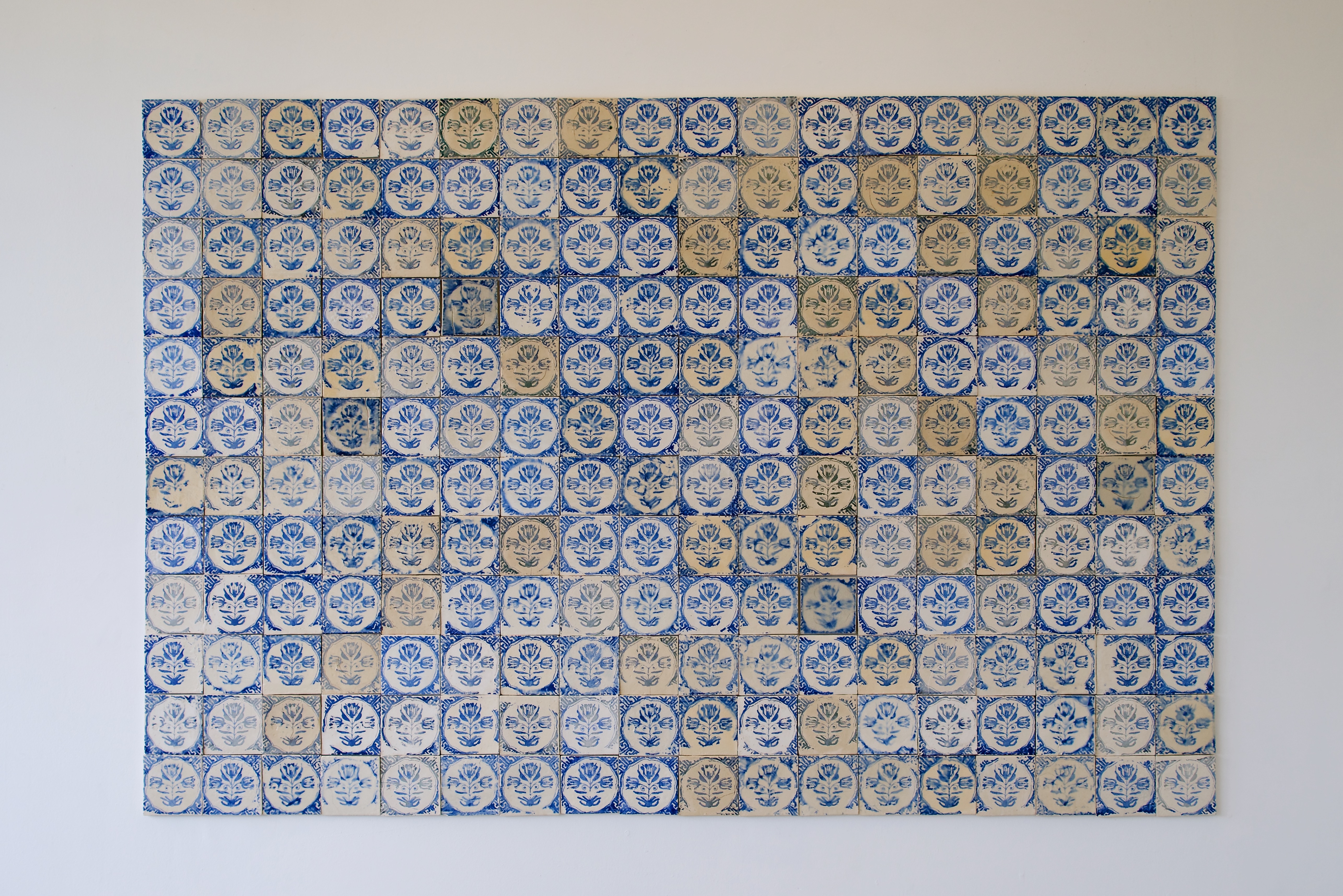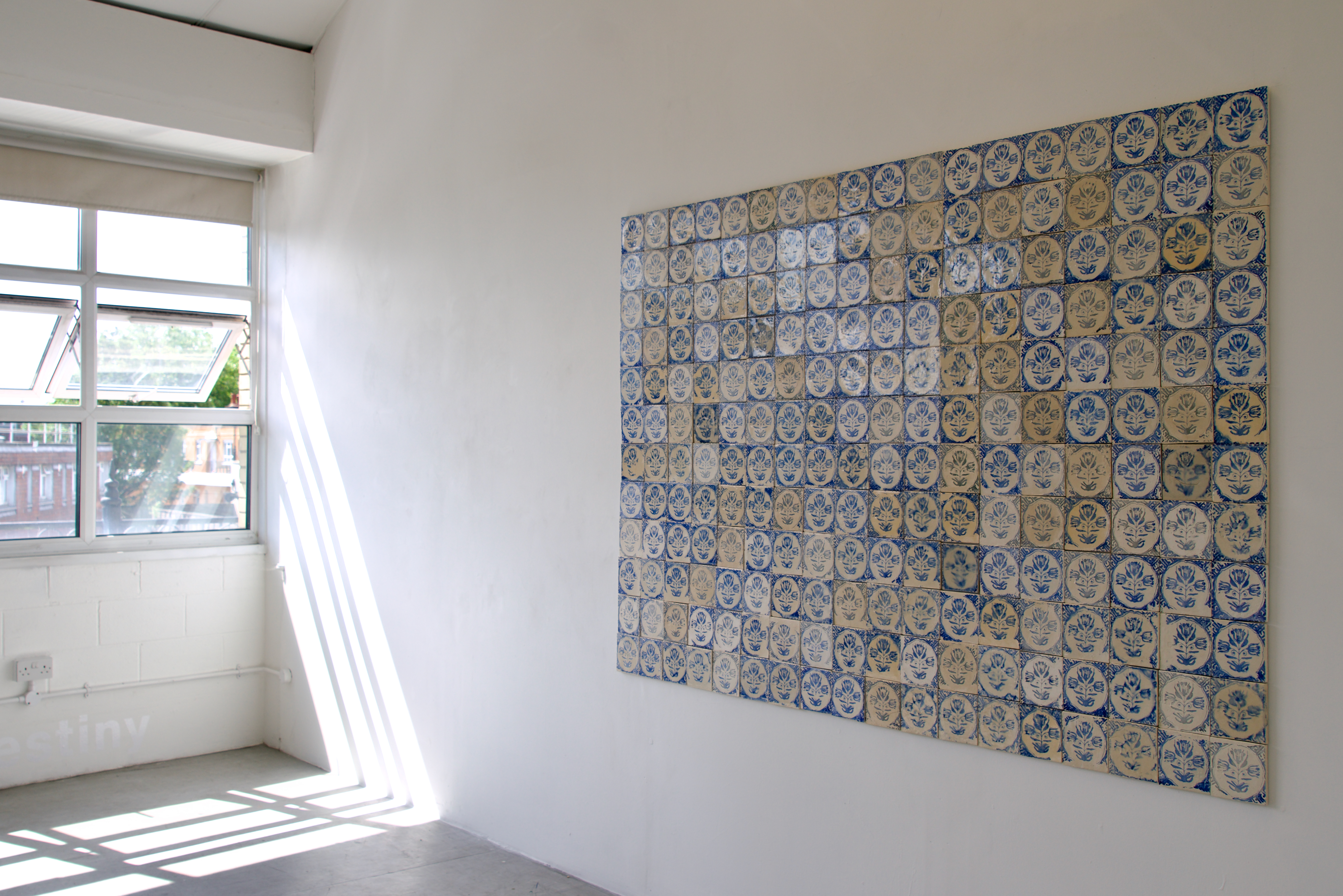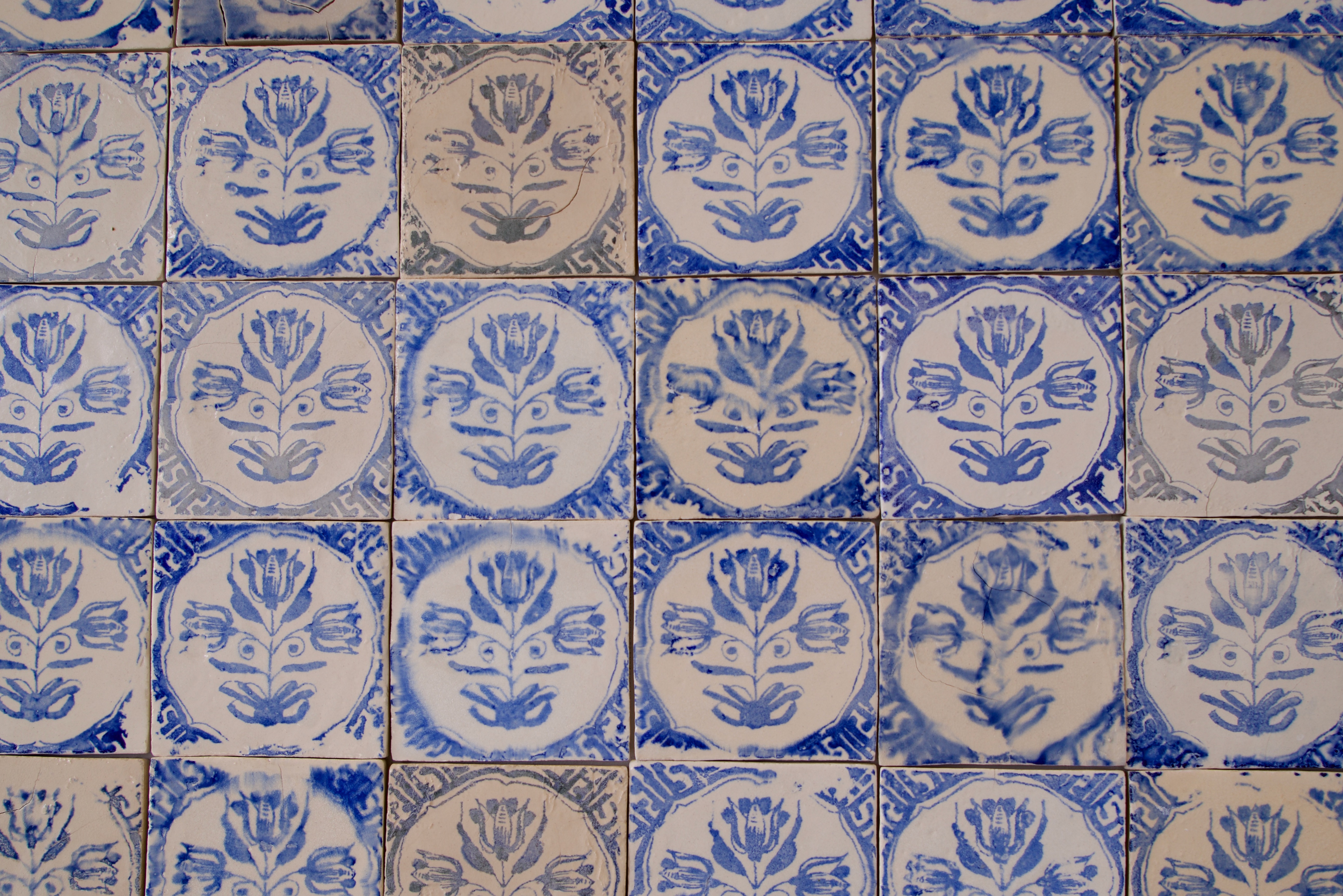


Analysts have compared the behaviour of the cryptocurrency Bitcoin to Tulipmania; a moment when tulips gripped the Dutch economy and imagination. Being highly coveted, the Dutch would cultivate a single bloom and place it the centre of a garden surrounded with mirrors. They went to great alchemical lengths to encourage a 'break' in the flowers which produced flairs of striking vivid colours in their petals to increase their value.
In the 1920’s, plant pathologists discovered that a virus was responsible for this deviation, which was then aggressively bred out.
“Blue and white pottery;” literally meaning, “Blue Flowers” developed from 14th century “bluish-white ware” in China. Chinese export porcelain produced in the 17th century for European markets depicted Chinese and European scenes. Dutch Delftware became a competitor with imitation motifs on earthenware which reached the East where potters made porcelain versions for export back.
Minted
Hand pressed earthenware tiles, silkscreened Delft tulip pattern c.1650, cobalt, high alkaline frit glaze
2015